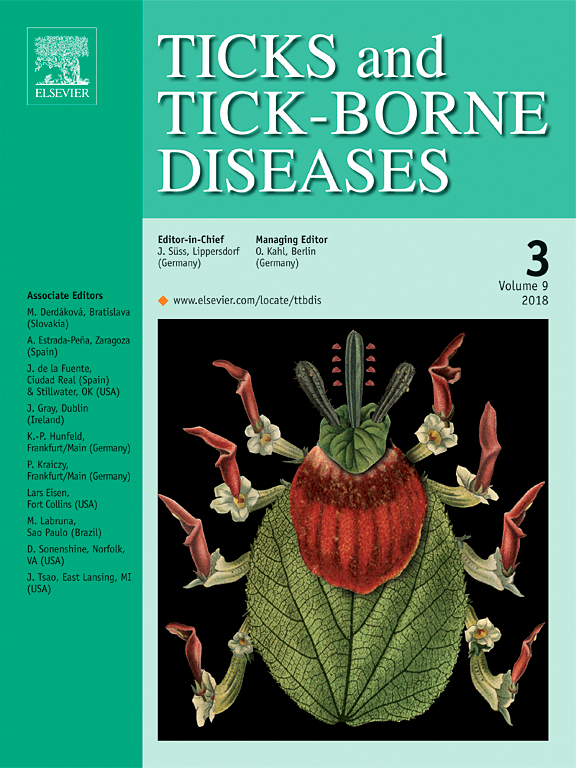Ver ítem
- xmlui.general.dspace_homeCentros e Institutos de InvestigaciónCICVyA. Centro de Investigación en Ciencias Veterinarias y AgronómicasInstituto de BiotecnologíaArtículos científicosxmlui.ArtifactBrowser.ItemViewer.trail
- Inicio
- Centros e Institutos de Investigación
- CICVyA. Centro de Investigación en Ciencias Veterinarias y Agronómicas
- Instituto de Biotecnología
- Artículos científicos
- Ver ítem
Epidemiology of Babesia, Anaplasma and Trypanosoma species using a new expanded reverse line blot hybridization assay
Resumen
Vector-borne hemoparasitic infections are a major problem that affects livestock industries worldwide, particularly in tropical and subtropical regions. In this work, a reverse line blot (RLB) hybridization assay was developed
for the simultaneous detection and identification of Anaplasma, Babesia and bovine trypanosomes, encompassing
in this way the most relevant hemoparasites that affect cattle. A total of 186 bovine blood samples
collected from two
[ver mas...]
Vector-borne hemoparasitic infections are a major problem that affects livestock industries worldwide, particularly in tropical and subtropical regions. In this work, a reverse line blot (RLB) hybridization assay was developed
for the simultaneous detection and identification of Anaplasma, Babesia and bovine trypanosomes, encompassing
in this way the most relevant hemoparasites that affect cattle. A total of 186 bovine blood samples
collected from two different ecoepidemiological regions of northeast Argentina, with and without tick control, were analyzed with this new RLB. High diversity of parasites, such as Babesia bovis, B. bigemina, Anaplasma marginale and three different Trypanosoma species, was found. High rates of coinfections were also detected, and significant differences were observed not only in the prevalence of parasites but also in the level of coinfections
between the two analyzed areas. Regarding the Trypanosoma genus, we provide molecular evidence of the
presence of T. vivax and T. theileri for the first time in Argentina. Besides, since the RLB is a prospective tool, it
allowed the identification of a yet unknown bovine trypanosome which could not be assigned to any of the bovine species known so far. In the present study we provide new insights on the prevalence of several pathogens that directly impact on livestock production in Argentina. The RLB assay developed here allows to identify simultaneously numerous pathogenic species which can also be easily expanded to detect other blood borne pathogens. These characteristics make the RLB hybridization assay an essential tool for epidemiological survey
of all vector-borne pathogens.
[Cerrar]

Fuente
Ticks and tick-borne diseases 9 (2) : 155-163. (February 2018)
Fecha
2018-02
ISSN
1877-959X
Formato
pdf
Tipo de documento
artículo
Palabras Claves
Derechos de acceso
Restringido
 Excepto donde se diga explicitamente, este item se publica bajo la siguiente descripción: Creative Commons Attribution-NonCommercial-ShareAlike 2.5 Unported (CC BY-NC-SA 2.5)
Excepto donde se diga explicitamente, este item se publica bajo la siguiente descripción: Creative Commons Attribution-NonCommercial-ShareAlike 2.5 Unported (CC BY-NC-SA 2.5)

